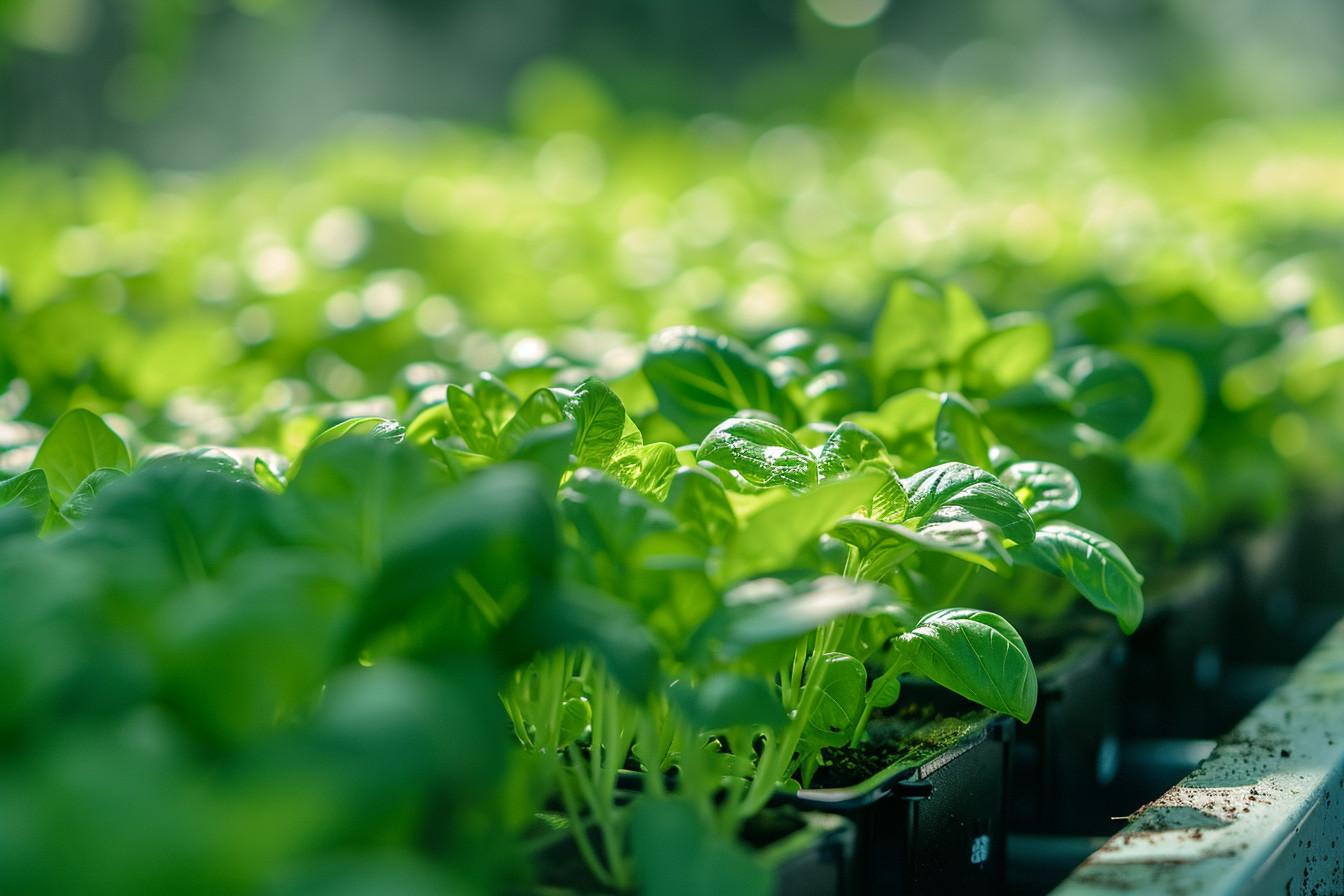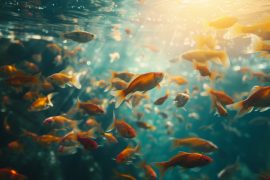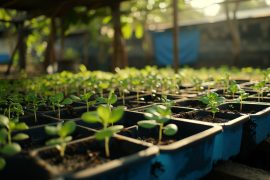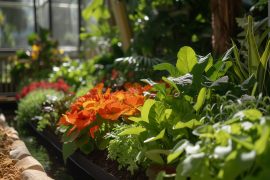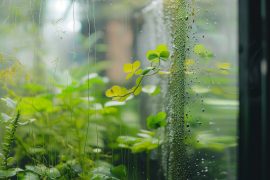Ever stumbled upon a gardening method that’s not only kind to Mother Earth but also gives back more than it takes? That’s aquaponic gardening for you. It’s where the tranquility of raising plants meets the gentle hum of an aquatic ecosystem.
I’m diving into the world of aquaponics, a sustainable farming revolution that’s all about growing fish and plants together in one harmonious system. It’s a game-changer for sure, blending the best of aquaculture and hydroponics into something truly special.
Understanding Aquaponic Gardening
When I first stumbled upon aquaponics, it felt like I’d walked into a secret garden—a space where fish and plants coexisted in such harmony, it was as if they were old friends. Something about the tranquility of fish gliding under a canopy of lush greens struck me as the epitome of peaceful cohabitation. Let me share with you what I’ve learned about this fascinating method of gardening that’s as educational as it is soothing to the soul.
First off, aquaponics is a closed-loop system. Picture this: you have your aquaculture part where the fish live, and it’s connected to the hydroponics part—that’s where the plants grow without soil, by the way. The water from the fish tank, chock-full of nutrients from fish waste, flows over to the hydroponics section. Plants take what they need, and in the process, they clean the water. Then, this purified water is recirculated back to the fish. It’s a win-win situation in a self-sustaining loop.
I always explain to my friends that aquaponics mirrors nature’s cycle, and best of all, it’s pretty forgiving for us beginners. There’s no need for pricey fertilizers or chemicals, making it a shoo-in for sustainable farming. Plus, the balance it creates limits pests and diseases, which is a huge sigh of relief for any gardener.
To make things clearer, here’s a simple breakdown of the main components of an aquaponic system:
- Fish Tank: Home to the aquaculture part of the equation.
- Grow Bed: Where the hydroponics magic happens and plants flourish.
- Biofilter: A crucial element where bacteria convert ammonia from fish waste into nitrates for plants.
- Water Pump and Piping: Keeps that precious water moving between sections.
Imagine tending to a garden that’s as productive as it is picturesque. In these systems, plants often grow faster than in traditional gardens and require less space. Let’s not forget, there’s the added bonus of fresh produce right at your fingertips alongside a fresh fish harvest—if you’re raising edible varieties, that is.
The Benefits of Aquaponics
Every morning, when I wander into my aquaponic garden, it’s like stepping into a miniature Eden. The steady hum of water, the flicker of fish beneath the surface, and plants thriving in their gravel beds—it’s all harmoniously intertwined. This tranquil ecosystem doesn’t just save me from the stress of traditional gardening but also nurtures my bond with nature, revealing insights into a world where every component works in perfect sync.
Let’s chat about why aquaponics is not just a method but a movement transforming our approach to cultivating food. Beyond its serene facade lies a powerfully efficient process that benefits both mind and body. In my neighborhood, we’ve seen firsthand the impact of these systems—schools incorporating them into science curriculums, community centers providing fresh produce, all while enlightening folks about sustainable practices. It’s tangible education that resonates well beyond the garden beds.
When I explain aquaponics to someone who’s never heard the term before, I liken it to a dance. Stay with me here—the fish produce waste, which, though it doesn’t seem glamorous, is nutrient gold for the plants. A biofilter acts as a choreographer, converting that waste into a form that plants can metabolize. Then, these plants—ballerinas, if you will—gracefully remove these nutrients, purifying the water, which cycles back to the fish. And so the dance goes on, with each step as crucial as the last.
Maybe it’s the technophile in me, but the technical side of aquaponics also has a certain allure. It’s a delicate balance, where the pH levels, the types of fish, the choice of plants are all dialed into an accessible symphony of sustainability. For someone who might find traditional gardening daunting, this method is refreshingly manageable. I keep a little notebook with my observations and tweaks to the system—it’s like a journal of a living organism that I am part of.
- Water Efficiency: Aquaponics uses up to 90% less water than conventional farming, a fact that comes in handy during droughts.
- Space Efficiency: Due to the vertical nature of many setups, you can grow a lot more in a much smaller footprint, making it ideal for urban environments.
- Yield: Harvests can be significantly larger, as aquaponic plants often grow faster due
The Aquaponic System: How It Works
The harmonious concerto of aquaponic gardening is like a beautiful symphony I get to conduct right in my backyard. I’m always amazed at how serene it feels, immersing myself in the delicate balance of fish and plants existing in a tranquil partnership.
In my aquaponic haven, the swoosh of the water and gentle rustling of leaves are the background music to a spectacular, green production. Let me share how this wondrous system operates, like they’re nature’s very own pieces of orchestra, seamlessly side by side.
Imagine I’ve got a tank full of fish below and a bed of plants above. The fish do their business, which in the gardening world, is pure gold. Their waste, although not so pleasant for us, is loaded with nutrients that plants just can’t get enough of. It’s here that the magic begins.
A pump pulls this nutrient-rich water up to the plant beds. Now, this is where the plants come into the spotlight. They’re like tiny, green sponges, greedily soaking up all those nutrients. As they do, they naturally filter and clean the water. It’s like getting a meal and a bath all in one go if you’re a fish.
By the time the water trickles back down to the fish tank, it’s fresh and clean—ready for the fish to use once more. And round and round it goes; it’s a closed-loop system, a perfect circle of life right before my eyes.
Here are some bits of gold I’ve learned about the components of an aquaponic system:
- The fish tank: Home to the fish and the starting point of the nutrient cycle.
- The grow bed: Where the plants live and clean the water.
- The pump and plumbing: The arteries of the system, moving nutrient-rich water from fish to plants.
I’ve shared my journey with students and community members, opening up a world of sustainable gardening. From little kids to grown-ups, everyone’s drawn to the simplicity yet profound nature of these systems. There’s something infinitely rewarding about watching this ecosystem at work, knowing that it requires so much less water than traditional gardening and doesn’t need any synthetic fertilizers or pesticides.
Choosing the Right Fish and Plants
Whenever I step into my aquaponic garden, there’s a sense of peace that washes over me. It’s here, amidst the gentle bubbling of water and the lush greenery, that I truly connect with nature. But the harmony in my garden isn’t just serene—it’s a carefully balanced ecosystem, and the choice of fish and plants is crucial.
Selecting Compatible Fish is more than just picking what looks pretty; it’s about understanding which species will thrive in your system’s environment. I first consider the climate, as it plays a massive role in my fish’s wellbeing. My go-to fish are usually Tilapia or Goldfish, because they’re hardy and can withstand variations in temperature quite well. They also produce plenty of waste, which is gold for plant growth.
In colder regions, many aquaponic gardeners opt for Trout; they prefer cooler water and grow quickly. However, it’s essential to match your fish choice with your commitment level. Some fish demand more care—like Trout—or stricter water conditions, while others are more laid-back.
As for Plant Selection, think about what you want to harvest. Are you looking to spice up your meals with fresh herbs or aiming for a hefty crop of leafy greens? Let me tell you, there’s nothing like snipping off some basil or kale straight from your own garden. One rule of thumb I follow is to start with easy-to-grow species like Lettuce, Spinach, or Herbs. These are not only forgiving for beginners but also ensure quick results, which is super encouraging!
Balancing the Two is like a dance; both partners need to work in sync. The fish produce nutrients for the plants, and the plants clean the water for the fish. It’s fascinating, really. I always make sure the fish population supports my plant’s nutritional needs. Overloading either end of the system can lead to poor plant growth or unhealthy fish. A generally safe stocking density is one pound of fish for every five to ten gallons of water.
Setting Up Your Aquaponic Garden
When I took the plunge into setting up my own aquaponic garden, I felt like I was crafting my personal oasis, a space where the hum of the outside world faded into the background, and the only thing that mattered was the serene bond between fish, plants, and myself. It’s a tranquil corner of the world where the cycles of life play out in the most peaceful manner.
The first step was to figure out the layout. I needed a place that offered enough light for the plants but also had easy access to electricity for the pumps. After some contemplation in my yard, a spot near the back, kissed by the morning sun, caught my eye. It felt like it was meant to be.
To anyone new to the concept, setting up an aquaponic garden might sound technical, but it’s pretty straightforward once you’ve got the hang of it. You’ve got your fish tank, where our scaly friends live. Above that, there’s a grow bed where the plants will root. A small pump moves water up to the plants, and then gravity pulls it back down to the fish. Simple as that.
I chose a 250-gallon fish tank – size depending on how many fish you plan to have – and above it, set up a 4×8 foot grow bed fitted with a simple flood and drain system for the water. I made sure to include a sturdy clay-based growing medium in the bed to support the plants and offer a surface for the beneficial bacteria to cling to.
To make all this talk a bit more tangible, let’s run some numbers:
| Component | Size/Type | Function |
|---|---|---|
| Fish Tank | 250 Gallon | Home for the fish |
| Grow Bed | 4×8 foot | Space for plant growing |
| Pump | Sufficient Capacity | Moves water to grow bed |
| Growing Medium | Clay-Based | Supports plants, bacteria |
For the fish, you want something hearty that can handle changes in their environment – I went with tilapia for their durability and fast growth. And as for plants, lettuce and basil never fail; they grow quickly, making them perfect first crops to witness the magic of aquaponics.
Troubleshooting and Common Issues
As I’ve wandered through the peaceful echelons of my aquaponic garden, I realized that even in the quietest, most harmonious corners, issues can arise. The idyllic dance between fish and plants sometimes stumbles, so let’s talk troubleshooting.
When you start noticing something’s off, don’t panic. Most problems in aquaponics are common and fixable. The balance is delicate, and I found it’s essential to keep an eye on a few key factors.
Water Quality Woes
Ammonia Spikes: High ammonia levels can harm your fish. In my early days, I learned overfeeding was a common culprit. Cut back on feed, and check for any dead plant matter decomposing in the water.
Nitrate and Nitrite Levels: Yes, nitrates are plant food, but too much can tip the scales. Regular water testing is crucial. If levels are climbing, consider adding more plants or performing a partial water change.
Unhappy Plants
Yellowing Leaves: If your plants are looking yellow, they might be telling you they’re nutrient deficient. Check your water’s pH first; if that’s balanced, you may need to boost the minerals in the water, like iron.
Poor Growth: Stunted plants could be struggling with root health. Gently examine the root systems for signs of rot or disease. Sometimes, it’s just a matter of adjusting your water flow to ensure all roots get their share of nutrients.
Finicky Fish
Sickly Fish: They’re usually a sign that the water’s not quite right. Watch for lethargy or gasping at the water’s surface. Get those water test kits out; often the solution lies in tweaking the pH or temperature.
Fish Aren’t Eating: Just like my Aunt Betsy at Thanksgiving, fish can be picky. Temperature fluctuations, stress from overcrowding or even the wrong diet can lead to snubbed meals. Observe, adjust, and try again.
Here’s a story. Once I had a tank of tilapia that just wouldn’t thrive. I tested, tweaked, and toiled until I discovered the issue — light. They needed a day-night cycle, just like us. A simple timer for the grow lights did the trick.
Final Thought
So there you have it—my dive into the world of aquaponic gardening. It’s clear that this method has the potential to revolutionize how we think about producing food sustainably. By bringing fish and plants together, we’re not just cultivating crops; we’re nurturing a whole ecosystem. It’s a hands-on learning experience that’s as rewarding as it is educational. Whether you’re troubleshooting the pH levels or simply enjoying the harmony of your self-sustaining garden, aquaponics offers a unique blend of science and serenity. I’m excited to see where this journey takes us all next. Happy gardening, everyone!
